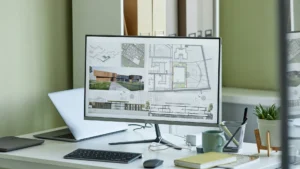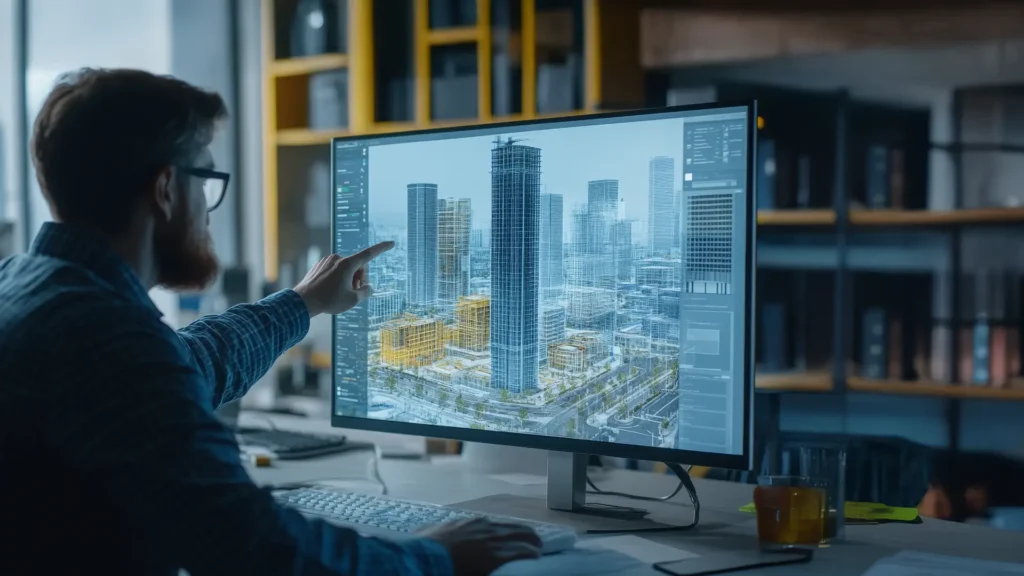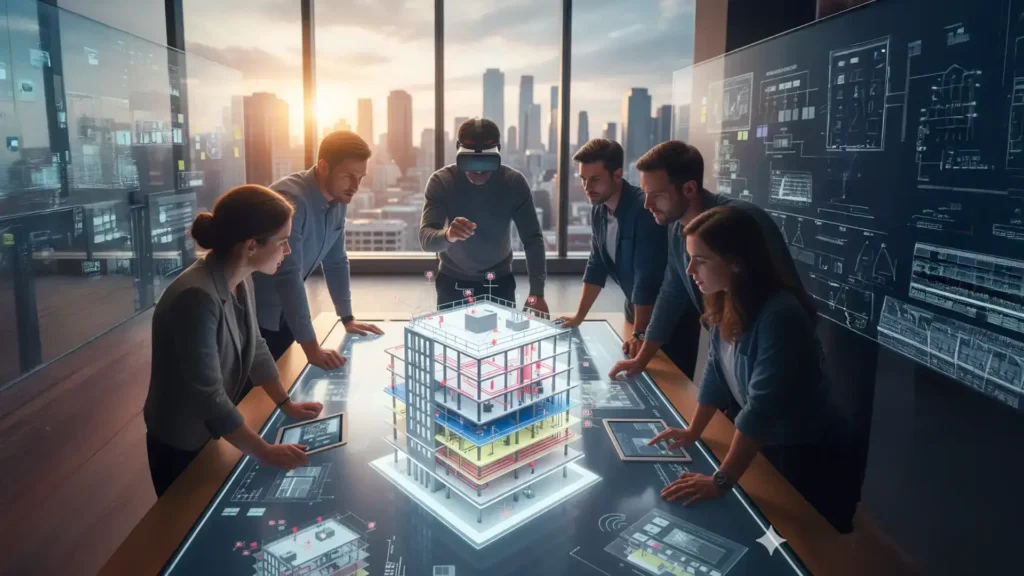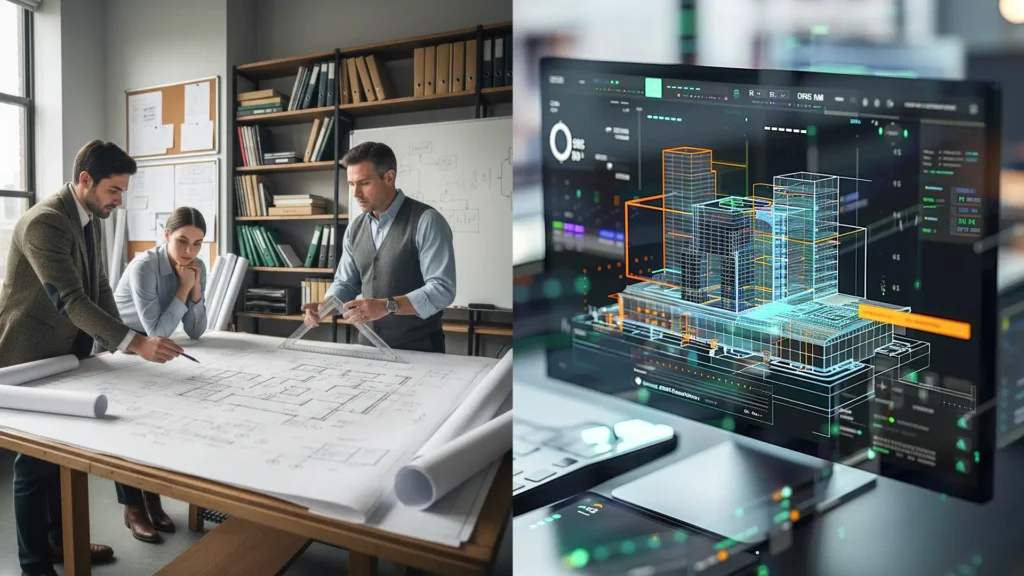Basic of BIM: An Overview of Building Information Modeling
Introduction
As an architect, consider yourself ready to take on a big project. Instead of studying through bunch of blueprints and static 2D drawings, you use a dynamic & interactive 3D model. This model displays every element of the structure and detects any issues before they occur. Will that not be better than bunch of different blueprints? Greetings from the sphere of Building Information Modeling (BIM). Here, advanced technology and construction combine to achieve remarkable precision, efficiency & teamwork. This blog will explore (BIM), its significance & how it is transforming construction sector.
What is BIM?
BIM, an acronym for Building Information Modeling, is a digitalized detailed process that helps to create detailed 3D model of your structure. These models help you know the structure in detail before the actual construction. The model includes information on the construction material, ASMEPF connections, dimensions, how different parts interact with each other, physical and functional characteristics & other details of the structure to help contractors, stakeholders, architects, engineers, designers & clients visualize and suggest changes to the structure being constructed.
Generating these models lowers the chances of mistakes in the construction process, saving cost, time & material use for the structure. According to the International Journal of BIM & Engineering Science (IJBES), UK makes best use of BIM technology by being at the lead of World. Nearly 70% of professionals in construction sector used BIM on projects in 2019, and majority of remaining professionals were fully aware of its importance and use. These models are also used during the maintenance and renovation of the structure.
Now, these models include different objects that define the BIM process. Let us discuss them in detail.
BIM Objects – Definition & Use
BIM objects, or Building Information Modeling objects, are various models of real-life components of the building or the structure. These objects give a detailed view and description of walls, doors, windows, internal structures, different ASMEPF connections & other components. It allows engineers, contractors, architects & stakeholders to understand building model and structure in detail. These are created using Revit, Navisworks, Tekla & other such software.
This also helps to estimate cost of the material, maintenance schedules, amount of time required, performance, dimensions & every other technical and non-technical detail.
Benefits of BIM
- Improved Teamwork and Interaction
By providing information in a single space, the team can work on the project simultaneously and everyone is updated on changes made in the file, increasing teamwork.
- Enhanced Visualization and Design Quality
3D models in BIM help in visualizing design before its construction, reducing chances of on-spot errors and design defects.
- Lower Costs and Enhanced Efficiency
Detection of flaws sooner helps reduce mistakes, ultimately reducing cost and this also contributes to pre-planning of the structure to get a better outcome.
- Better Project Administration
The BIM designs and processes help to maintain building structure from the start till renovation, or future demolition of building. This facilitates long-term asset management.
- Ecological Viability and Energy-saving
Using energy efficiency and environmental impact analyses, BIM facilitates the design of greener buildings. Along with lowering expenses and environmental impacts, it also optimizes energy usage.
- Adherence to Regulation and Hazard Assessment
By incorporating rules into the design process, BIM guarantees adherence to local construction requirements and lowers risks by identifying design flaws early on and averting expensive mistakes and delays.
Important conclusions from a recent Dodge Data & Analytics survey on contractors show that using BIM increased Return on Investment (ROI). The following conclusions were made from the survey telling “A 25% increase in labor productivity, a 25% decrease in labor, a 5% reduction in the final construction costs, and a 5% increase in the speed of completion.”
Different BIM Levels
Level 00
This is a very basic level of Building Information Modeling (BIM), where 2D CAD designs are created and are not shared with everyone. These are either created by traditional methods or in PDF format, offering minimal or no sharing among other designers, drafters & stakeholders. It is also referred to as zero collaboration level. Use of this level is rarely seen in modern world.
Level 01
This level involves 3D CAD modeling with 2D drafts for documentation and a detailed view of structure. These designs are moved to a Common Data Environment (CDE), where every drafter and designer can share their design and work on it. It allows a little collaboration with others, but not completely.
Level 02
This level, also known as full collaboration level, allows different drafters, designers, stakeholders & others to create their CAD models, and then share them commonly in CDE. These are then combined and formed into a single BIM-processed design allowing contributions from everyone. These are created in COBie or IFC format for easy collaboration and changes from team. All the disciplines, ASMEPF, duct & other details are made at this level.
Level 03
This level of detail allows all collaborators to work on same file simultaneously and make changes accordingly. This makes model fully integrated for the use of everyone. It makes sure that there is no overlap of information or changes made in the file. At this level, BIM increases efficiency and gives every single detail of structure.
Higher Levels – 04, 05, and 06
These are higher levels of integration in BIM-processed models, allowing cost estimation, maintenance requirements, functioning, time required & other necessary details of the project. This allows stakeholders, contractors & others involved to plan and execute construction of project.
Future of BIM
BIM has enormous future possibilities for the building industry. It has potential to grow even more significant and powerful as technology continues to progress.
- Artificial Intelligence (AI) in BIM
With the rise of AI, its integration into BIM will be very common. Using AI to generate ideas and details of a particular discipline of structure might be seen. Making right use of AI can reduce time taken to develop a BIM-processed model, and certainly reduce time taken to develop structure.
- Augmented Reality (AR) and Virtual Reality (VR) with BIM
The use of AR and VR helps to visualize BIM-processed model or structure created, making it easier for designers, drafters & stakeholders to take action on the design.
- Cloud Collaboration in BIM
As of now, cloud computing has already been integrated with BIM. As seen in level 02 of BIM, CDE is a Common Data Environment where you can share information with others and they can share their collaborative contributions too.
Conclusion
Building information modeling, or BIM, is transforming construction sector through increased efficiency, better project outcomes, and cooperation. BIM facilitates smooth collaboration between stakeholders, reduces mistakes & maximizes resource use, resulting in more intelligent, effective & sustainable building methods. Take lead in a revolutionary movement that is transforming our built environment and opening door to a more intelligent, sustainable future by embracing BIM now.









